We rightly have our arms down at our sides almost all the time. While our shoulder joints can handle this stress, some of our muscles may fight against laying softly (stress, anyone?) and the shoulder joint can therefore hurt quite a bit. This stretch can be done any time, any where, to bring awareness to the shoulder joint (specifically, the medial border of the scapula (shoulderblade). If you find yourself hunching your shoulders and dropping them throughout the day, I'm betting this stretch will be quite nice for you.
Anatomy Lesson:
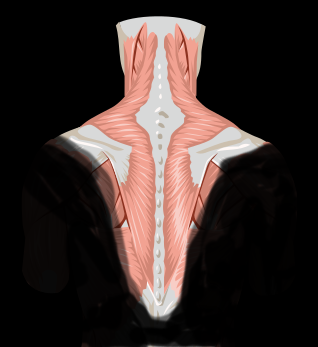
It's worth defining some semantics before we begin: The "Shoulder" joint in anatomy refers to the glenohumeral joint; that is the "ball and socket" of your upper arm and shoulderblade. However, when clients come to my office complaining of "shoulder" pain, this is almost never the area they are describing. What we colloquially refer to as "shoulder" is often the Trapezius muscle ("Trap"). As you can see from the illustration, this is actually a huge muscle that attaches as the base of the skull, out to the edge of the shoulderblade, and back down the thoracic spine. The white areas around the shoulderblades in this picture represent the edge of the scapulae; it is this area of the trap that we are stretching with this movement.
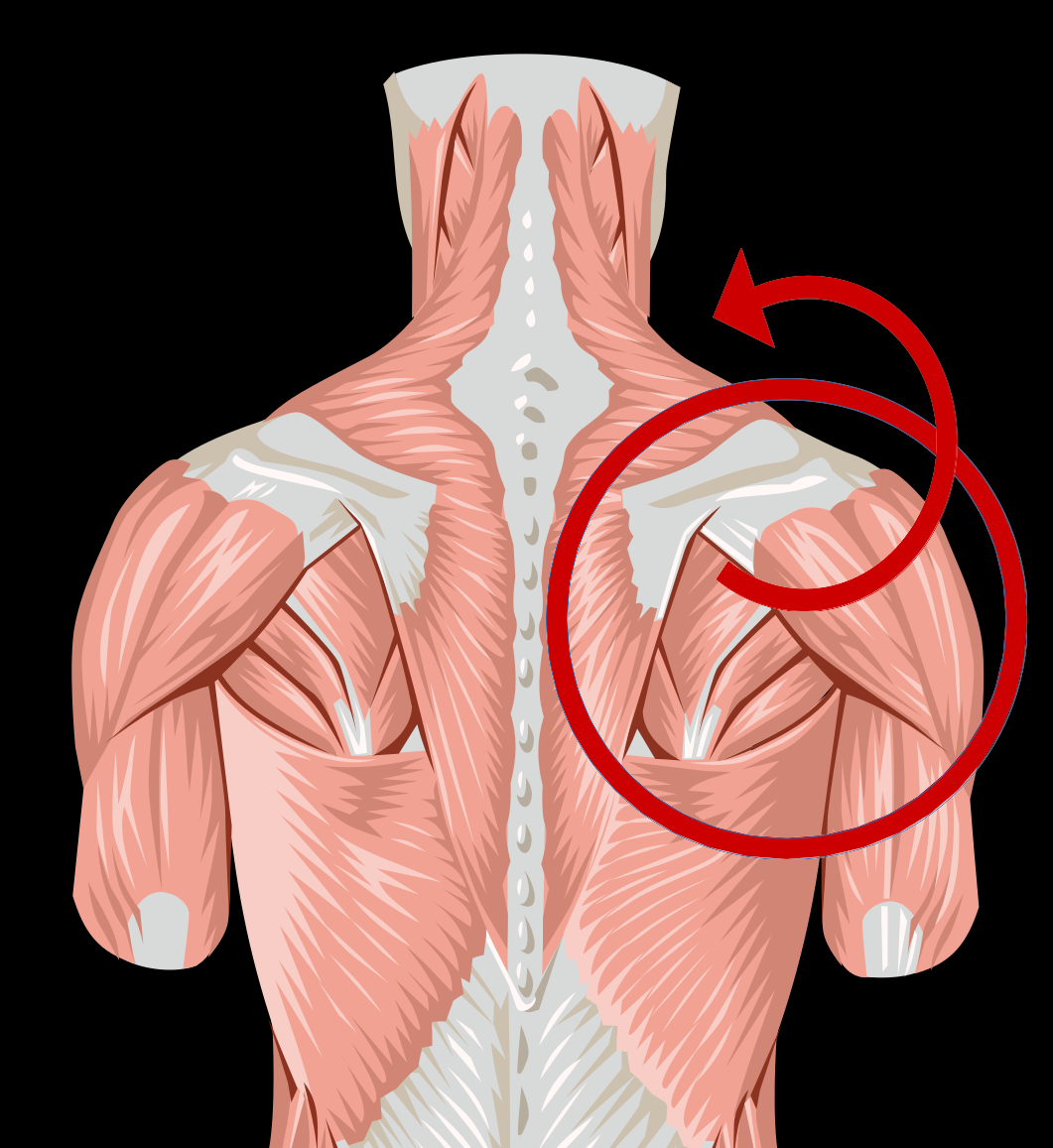
As you can see in this picture, we are attempting to move the shoulderblade trap attachments in an outward and upward motion. This is a motion they almost never go through, and therefore feels like an amazing stretch!
The Stretch:
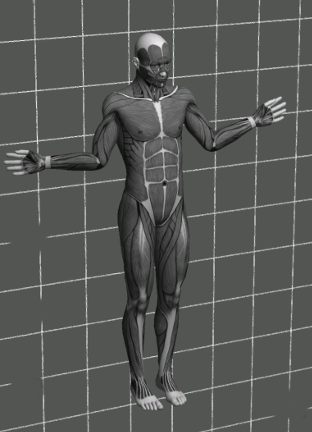
|
Begin standing against a wall, with your shoulderblades COMPLETELY flat against it. Your lower back can and should arch away from the wall a bit, but your entire upper back and head should be pressed against it. Hold your lower arms out at your sides.
|
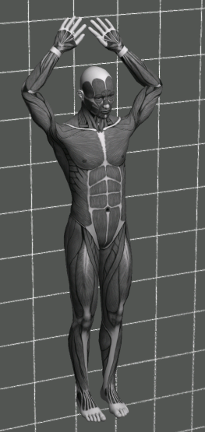
|
Slowly and methodically raise your arms slowly up above your head, ALL THE WHILE KEEPING YOUR UPPER BACK COMPLETELY PRESSED AGAINST THE WALL. This pressure is the critical part of the stretch; your shoulderblades are going to want to pull away, using bigger muscles as support. Don't let them! |
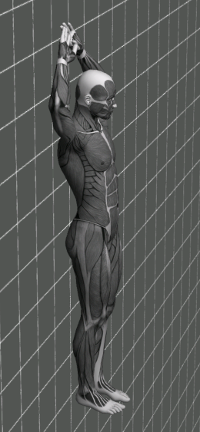
|
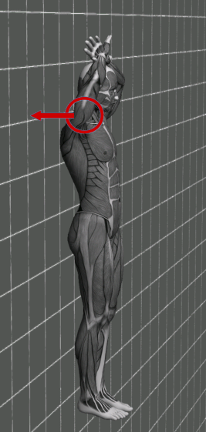
|
The stretch is finished when your arms are completely above your head, and your shoulderblades AND ELBOWS are firmly pressed against the wall. This is where your body will try to compensate: pulling your elbows out away from the wall. If you notice them kicking out, gently push them back flat against the wall.
|
Hold the stretch for at least 20 seconds, then slowly lower your arms and repeat.
This stretch should move your traps though a range of motion they almost never go through, so you may find it difficult. Your traps move in so many ways and are used so much, I'm sure this stretch will relax them and give you more insight into how they help your upper body function.
As always, if you're noticing pain or discomfort, or if the stretch doesn't help, I can always lead you in the right direction during your next massage therapy session. I'll see you in my Westport office!